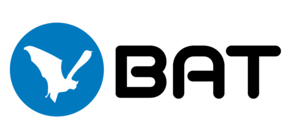A declassified World War II-era government guide to “simple sabotage” is currently making waves online. The book, titled Simple Sabotage Field Manual, was released by the CIA in 2008 and has quickly become one of the most popular open-source books on the internet. In fact, it’s now the 5th most-accessed book on Project Gutenberg, with nearly 60,000 downloads in December alone. But why does the world remain so fascinated by secret agents?
Part of the intrigue stems from our love for spy stories. Last year, the film The Ministry of Ungentlemanly Warfare, directed by Guy Ritchie, became a massive hit, further fuelling the public’s interest in the secret lives of agents. The film was a bestseller during the Christmas period, bringing to life those iconic agents sent on top-secret missions to blow things up. It seems there’s something about those shadowy figures, working in the background, that captures our imagination.
This fascination also raises interesting questions about modern covert operations. What are the cutting-edge technologies currently at play? What covert activities are taking place today that we’ll only learn about decades from now? Will we look back in 80 years and uncover the “secrets” of platforms like TikTok, which often seems filled with an overwhelming amount of trivial content? Or perhaps we’ll discover the hidden machinations behind artificial intelligence—tools that churn out information and analysis at an astounding rate.
Behind the scenes, automaton agents are constantly at work. As consumers, we’re only scratching the surface, retrieving the top results and blindly trusting the accuracy of the data we’re given. But, as we’ve seen with incidents like the Post Office scandal, machines can get things wrong. And, contrary to popular belief, OpenAI isn’t as open-source as it first seemed. There are safeguards in place, such as decency controls against harmful content and restrictions designed to prevent the spread of terrorism-related materials.
Living near GCHQ in Cheltenham, I’m particularly cautious about what I ask AI. I’m not keen to test the limits of its security features by asking it to help me build anything explosive. But it’s not just about what we can ask—it’s also about what AI can be trained to do.
At BAT Software, our own “secret agent” is hard at work, training AI to comply with IFA (International Financial Administration) standards. The real power of AI lies not only in the public tools and technologies available to us, but in how these tools are trained. Whether they are trained for good or bad purposes, it’s crucial to ensure they are used responsibly. And that’s the task BAT has set for itself: ensuring AI’s capabilities are harnessed for compliance and to serve a greater good.
It seems that, just as in the world of espionage, there’s more going on behind the scenes than we might realise.

